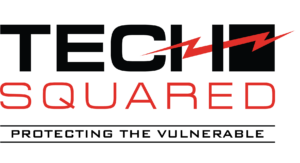Cybercriminals are persistent and will come up with new and creative strategies to penetrate your system and steal your money or data. The ever-changing types of malware and internet scams are proof of this. Exercising utmost vigilance and implementing a zero trust infrastructure will maximize your cybersecurity and help protect your system from these evolving cyberthreats.
What is zero trust?
In murder mystery games, you’re supposed to assume that everyone else in the room could be the killer. To protect yourself, you need to ask the other characters questions that will verify their identity and their innocence.
Zero trust works almost the same way. It is a cybersecurity concept that assumes everything, both within and outside the perimeters of your organization, is a threat to your system and its data. These potential threats include your own employees and yourself.
This is because a large percentage of data breaches occur because of stolen credentials, obtained using methods like phishing and spyware. Crooks disguise themselves as you or your staff and get full access to information that only authorized users are allowed to see or handle. For this reason, everyone looking to access sensitive data inside your network is required to meet stringent identity verification requirements. Those who fail will be blocked, even if they’re already inside your network.
How can you get started with zero trust?
Zero trust is composed of several principles and technologies, including:
1. Multifactor authentication (MFA)
This is one of the core technologies behind zero trust. It is an authentication method that requires users to provide several verification factors. These could be something you know (your password), something you have (a one-time PIN sent to you via SMS), a characteristic unique to you (your fingerprint), or somewhere you are (your geolocation information).
Many cases of data breach occur because cybercriminals crack their victim’s password. MFA addresses this issue by requiring a factor that crooks are not likely to have on their person, such as the victim’s phone or biometric data.
2. Next-generation firewall (NGFW)
NGFWs function similarly to traditional firewalls, but come with additional layers of protection. They permit a greater degree of user control, giving you even greater reign over what enters and exits your network. Instead of just filtering incoming information traffic, NGFWs investigate its origins and content to better ascertain whether it is a threat or not.
NGFWs also have intrusion prevention systems (IPS) built into them. An IPS blocks intruders, identifies their IP address, and bars incoming traffic from that IP address in the future. NGFWs are also continuously updated with intelligence on the latest threats to ensure they remain effective no matter how these threats evolve.
3. Microsegmentation
This is an approach in which security parameters are broken down into smaller zones, each of which require separate authorization to access. For instance, you can divide your data center into several dozens of zones. Once they log in, a user can access only one zone. To access another zone — and the data they contain — the user will need to pass another set of verification requirements. This method ensures that even if unauthorized users do gain entry, they’ll never have access to your entire network.
4. Access control
This involves giving users the least amount of data or access to your network, just enough for them to fulfill their tasks. For example, those in your sales team cannot access accounting data unless given permission. Like microsegmentation, this approach minimizes the amount of information that potential intruders can access.
5. Automation
Because of how much effort is involved in exercising such high degrees of access control to your data, a zero trust environment is almost impossible to accomplish manually. On a normal day, you’re bound to receive thousands of access requests as your staff go about their normal tasks. Before long, your IT team will be unable to verify all requests, resulting in slow turnovers or even downtime.
The best way to resolve this issue is through orchestration. This automates the process of accepting and verifying requests, ensuring that each of these is addressed in real time. In this way, zero trust is implemented without affecting the efficiency of your operations.
How can an MSP help?
The idea of having to start from scratch can be disconcerting to many business owners, preventing them from adopting valuable strategies such as zero trust. But the beauty of zero trust is that it does not require you to rip apart your current system. You just have to implement the right solutions and integrate them to achieve the concept.
A managed services provider like Tech Squared can help you get a better grasp of your network security needs and find solutions that address these. Our experts can also support you in ensuring these solutions work seamlessly with each other toward a zero trust environment.
Download this free eBook today to see what cybersecurity solutions you need in your company.
More Than Just Tech Support
Tech Squared services and solutions Reduce Stress + Add Value to your company.


